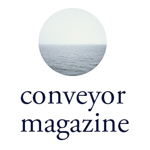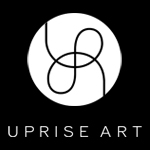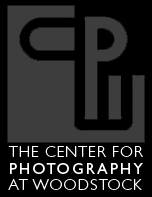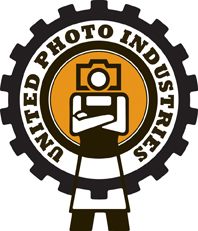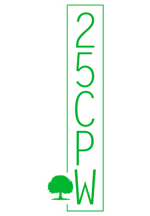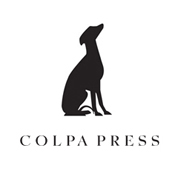MEGAWORDS at the Philadelphia Museum of Art
If you happen to be in Philadelphia this weekend stop by the Megawords Pop Up Book & Zine shop, organized alongside the Zoe Strauss exhibition.
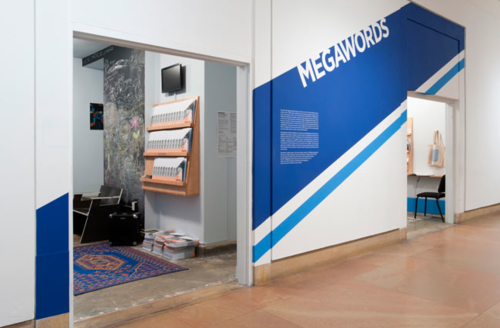




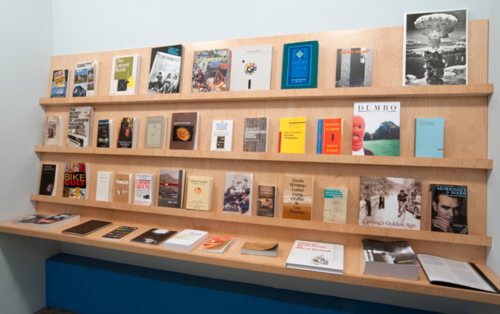
via the Philadelphia Museum of Art Website.
“The artist duo Megawords (Dan Murphy, American, born 1976; and Anthony Smyrski, American, born 1980) creates installations that are equal parts gathering space, event venue, artist studio, and store. The artist Zoe Strauss and the Museum invited them to design this installation as a satellite component of the exhibition Zoe Strauss: Ten Years, on view in the Honickman and Berman Galleries. Megawords has created a two-part zone in which to interact with people and offer alternatives to the ways visitors usually inhabit the Museum. The alcove presents publications that form a constellation of ideas and concerns central to Megawords’ thinking. To the left of the alcove is a workspace for the artists, and a site for public programs, but it is also available as an area where visitors can relax, read, and ask questions.
Photography and public installations are important to both Megawords and Zoe Strauss. Megawords’ eponymous magazine consists primarily of photographs by Murphy and Smyrski as well as their numerous collaborators, documenting life and art in cities across the globe. A new issue of the magazine has been created specifically for this Museum installation. Collaboration and DIY art projects are critical to Megawords’ practice, and the production of the resulting works is always as important as their display. They treat every aspect of an installation’s design, construction, and use as a relevant creative act. Within this installation, they will produce a range of materials including artist books by several of their peers.
Ownership of public space is the central matter at stake in all Megawords projects. Who gets to design, decorate, and use public places—including museums? Who has the authority to define how and for whom our cities and public institutions function? Megawords insists that we all do, but we must roll up our sleeves and literally make the spaces—both physical and imaginative—where we want to meet, think, work, and play.”
Philadelphia Museum of Art
26th Street and the
Benjamin Franklin Parkway
Philadelphia, PA 19130
Museum Hours
Tuesday - Sunday
10:00am – 5:00 pm
For More Information, Visit: { www.philamuseum.org }
Doll Clothes, Cindy Sherman. 1975.
Upon a second visit to see the Cindy Sherman Retrospective at the MoMA this week, I discovered this delightful film and several photographic collages created early on in her career. They are obscure and less circulated than the Film Stills and other iconic images by Sherman, and so I wanted to share it with you all. Hope you enjoy!
10 Apr 2012 / 6 notes / Cindy Sherman Doll Clothes MoMA Christina Labey
PRINT/OUT Exhibition + Print Studio at MoMA
I finally dropped by the Museum of Modern Art to check out the PRINT/OUT show, Located alongside the Cindy Sherman Retrospective on the top floor of the MoMA, PRINT/OUT is what one might expect from a museum showcasing their collection of a particular media. In this case, the media is print.
Overall it wasn’t as stimulating as some other design shows I’ve seen lately, particularly the Graphic Design: Now in Production recently exhibited at the Walker Art Center and coming soon to New York. Maybe it’s because print, and print-making, is a medium that begs to be touched. It is full of texture and process, and oftentimes the final product doesn’t give clue to the complexity that went into creating the work.
There were some definite highlights, for me Felix Gonzalez-Torres, Kara Walker, and Marina Abramovićare always a pleasure. And Philippe Parreno’s glow-in-the dark prints, were really a great way to bring the two-dimensional art form into the realm of a sensorial experience for the viewer. And glow-in-the-dark art, is just, really really great.
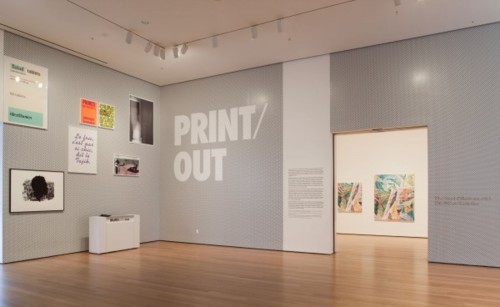

 ‘
‘

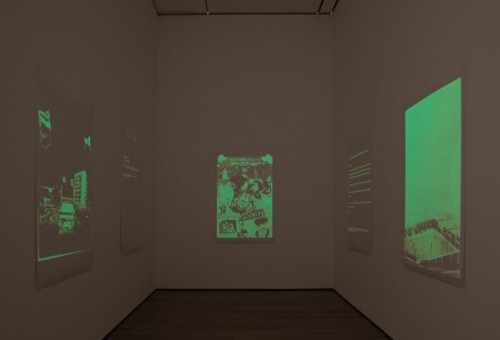
But the real gem of the show is the accompanying Print Studio and Millennium Magazines show at the the MoMA’s Lewis B. and Dorothy Cullman Education and Research Building. No, not just because Conveyor Magazine is featured. Well, maybe a little. But mostly because you can touch the art objects, leaf through the books and magazines. And even make your own books and zines. There is a lot of really exciting publishing-related programming organized around the Print Studio, including several collaborations with organizations such as the Reanimation Library in Gowanus and Triple Canopy.
Below are some images from the Millennium Magazines show. You should go. It’s free, and fun. Also, stay posted on the MoMA’s site { visit here } to see when there will be related programming with the Print Studio.
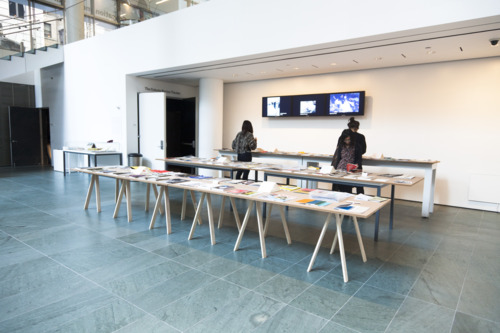

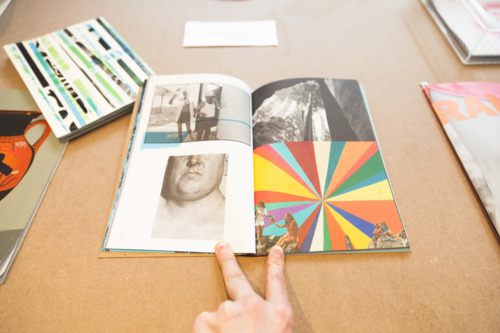



Print Studio
January 23–March 9, 2012
The Lewis B. and Dorothy Cullman Education and Research Building
Museum of Modern Art
Lewis B. and Dorothy Cullman Education and Research Building
4 West 54th Street
New York, New York
Open Daily Wednesday through Monday 12:00 p.m. to 4:00.
—
Millenium Magazines
Organized by Rachael Morrison and David Senior of the MoMA Library.
February 22 - May 14, 2012
The Lewis B. and Dorothy Cullman Education and Research Building
Museum of Modern Art
Lewis B. and Dorothy Cullman Education and Research Building
4 West 54th Street
New York, New York
—
For More Information, please visit: { www.moma.org }
And for publications included in the Millennium Magazine show, visit the link below:
{ www.moma.org/interactives/exhibitions/2012/millenniummagazines }
Oh and if you don’t have a copy of Conveyor Magazine yet, get your hands on one:
Curiosities, Issue No. 1
http://conveyorarts.org/curiosities
Mapping, Issue No. 2
http://conveyorarts.org/mapping
13 Mar 2012 / 2 notes / Christina Labey Millennium Magazines MoMA PRINT/OUT
Today I am excited about our first post from one of my favorite people in the whole world, Miss Carissa Potter. A native of Minnesota, she currently resides in San Francisco.
The first time I fell for Carissa was in high school, when she made me hot chocolate with homemade, vanilla-flavored whipped cream and colored sprinkles. We worked together in a chocolate shop called Maud Borup in Saint Paul, Minnesota. We drank coffee, ate a lot of chocolate and talked about art, and boys, and other nonsense while hiding from the freezing wintry weather of the northland.
Later, she moved to California. I moved to New York. I stumbled across her website last year, probably via Facebook. Soon thereafter, I emailed her to tell her I loved her work, which I still do. I hope you will too.
Here, I’ve posted a limited edition print she made for Valentines Day this year. It is also featured in her solo show, People I’ve Loved, now on view at Wire + Nail Gallery in San Francisco.
You should really visit her website: { www.carissapotter.com }
And click HERE to read a fantastic piece by Dorothy Santos on Carissa’s work.
Thanks and Happy Valentines Day. If you’re into that kind of thing…
14 Feb 2012 / 0 notes / Christina Labey Carissa Potter Dorothy Santos
The Cut, And Other Works by William Larson
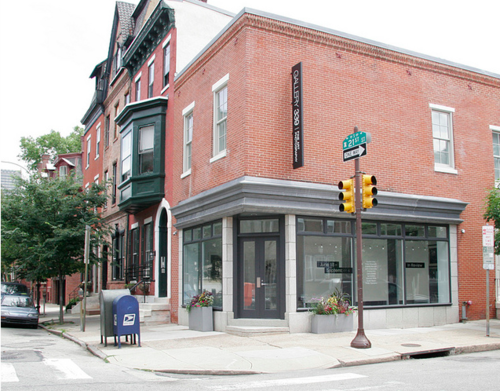
On the pretty little corner of 21st and Pine, in historic Philadelphia sits the 339 Gallery. A friend had recommended we visit, so Jason and I dropped in on the grey and snowy morning last Saturday. We were pleasantly greeted by the work of William Larson, an artist whose experimentations with strips of film were previously unknown to the both of us. I would tell you all about it in my own words, but the curatorial statement was so eloquent, that I’ve decided to share it with you, and stand in for my explanation of the works.
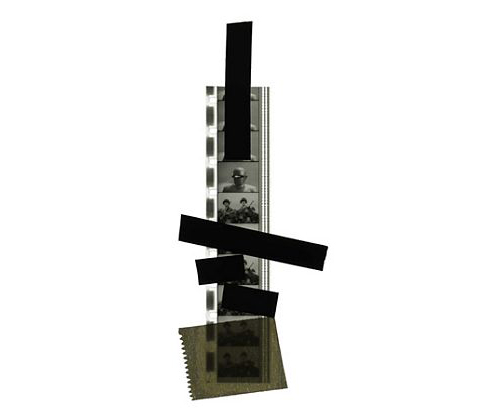
Series: “The Cut” From original film: The Day The Earth Stood Still, 2010

Series: “The Cut” From original film: King Kong, 2010
In a series of projects over the past forty years, William Larson has examined the intersection between cinema and still photography. Classic early work utilized a motor to pull film past a camera aperture, rendering a sense of motion and elapsed time in a still photograph. Recent bodies of work have conversely turned to the true nature of cinema—as a sequence of still images. Larson finds it particularly poignant to consider the shared characteristics of still and “moving” images as both lose their materiality to digital processes. With The Cut, Larson suggests a real weight and integrity to these myriad individual frames that comprise a film. Working with old industrial and feature films, he has sifted through many hundreds of thousands of frames to identify moments where visual continuity is broken. This instance of the cut or “edit” is a seamless and comfortable part of cinema, yet when the underlying frames are examined, it becomes something abrupt and surprising. Presenting these moments, these isolated frames, Larson creates new narrative possibilities. As he describes it, “scraps and remnants of old films are exhumed from their cinematic mooring and given a different path of expression and voice.” It is an elegy to the physicality of film, yet it is also a repurposing that revives film with perhaps unintended but provocative new meaning.
- Curatorial Statement, via the 339 Gallery

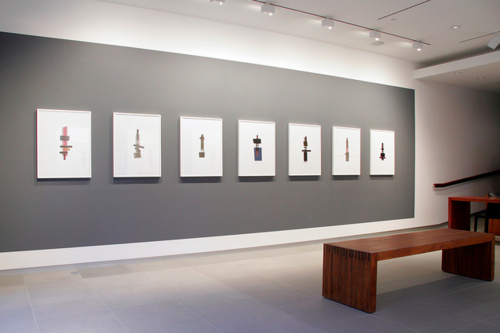
In addition the photographic prints, the exhibition includes a film, Serif: A Memoir by William Larson. The film was unfortunately not on view while we were there, but I’ve found a clip of it on Vimeo, so I thought I’d share. If anyone has a better version of the film that we can share, send us an email and let us know!
Serif: A Memoir by William Larson. Unofficial Footage found on Vimeo.
Finally, upstairs in the in the permanent collection of the 339 Gallery, I fell in love with an older body of work by Larson. Here are several pieces that I severely lusted after.
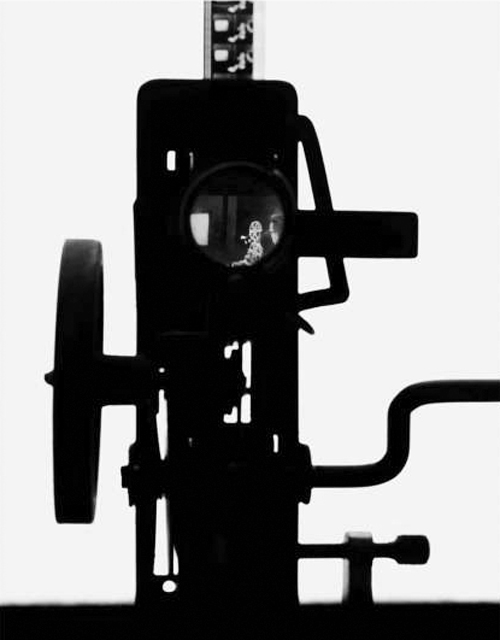
The Space Within the Outside World, 2004
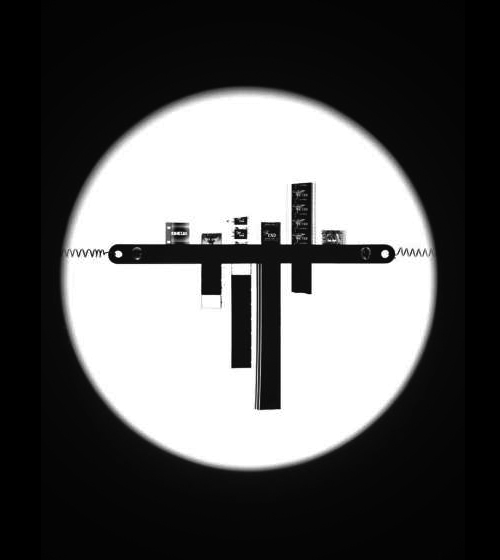
Various Endings. 2003.

The Vanishing Point. 2005,
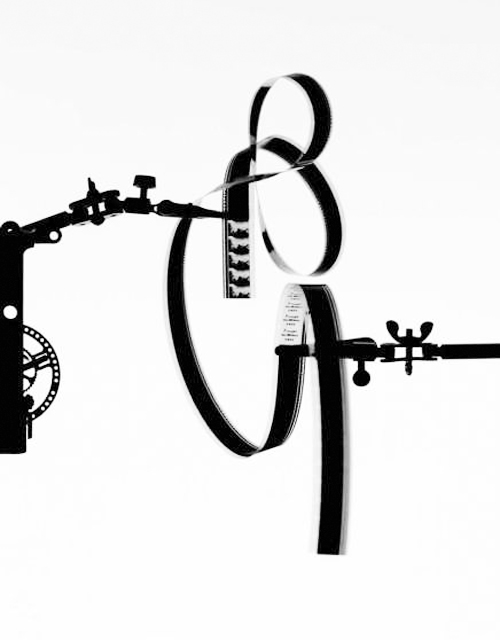
100 Frame Remake of Triumph of the Will. 2004.
339 South 21st Street
Philadelphia, PA 19103
13 Feb 2012 / 0 notes / 339 Gallery Artists We Love Christina Labey Philadelphia Exhbitions Best of Philadelphia
Last weekend, several of the Conveyor Magazine editors and I exhibited work in a show called Parts & Labor, a collaboration with the MFA students from Tyler School of Art at Temple University. Jason and I stayed on for the weekend to check out some of the photography galleries, the Philadelphia Art Museum and some smaller art spaces in the area. And of course, to indulge in the phenomena of the Philly Cheesesteak, which I am still dreaming about.
So, just a heads up, if it seems suspiciously Philadelphia-centric on the blog this week, it’s because I was bit inspired by our art wanderings over the weekend.
Hope you enjoy. And Happy Monday!
Celestial. Photographs by Stephen DiRado.
Beginning in the late 1990s and continuing to this day, Stephen DiRado has made a stunning portfolio of ‘straight’ photographs of a variety of dramatic celestial events such as comets and eclipses and more quotidian, yet no less miraculous, phenomena such as a sliver of a moon hanging over a watery horizon. His pictures are always earth-bound by horizon lines and hulking silhouettes of man made structures, yet by looking up he gives us a granular crustiness of the night sky as if the dark dome were sprinkled with illuminated sugar crystals.
- Mark Alice Durant { Excerpt from the Celestial exhibition, now on view at the CCNY }
Celestial
Curated by Mark Alice Durant
The Camera Club of New York
The Arts Building
336 West 37th Street, Suite 206
New York, NY 10018-4212
On View: January 20 – March 3, 2012
The exhibition includes photography, drawings and video works by:
Marina Berio, Stephen DiRado, William Lamson, Jeanne Liotta & Brea Souders
For More Information on the exhibition at CCNY, visit: www.cameraclubny.org
24 Jan 2012 / 5 notes / Photos We Love Christina Labey Mark Alice Durant CCNY
Here, Daniel Eatock discusses his work Felt-Tip Prints, part of the Walker Art Center’s exhibition Graphic Design: Now in Production. Jason and I were lucky enough to swing by this exhibit last week { it closes this Sunday } - More on our visit soon!
17 Jan 2012 / 0 notes / Daniel Eatock Walker Art Center Graphic Design: Now in Production Christina Labey
Trevor Paglen: Excerpt from Interview in Conveyor Magazine
Artist, author, and experimental geographer Trevor Paglen uses photography to document what lies beyond the limits of the visible world. In Limit Telephotography, he uses sophisticated optical systems to take long-range photographs of secret government sites, which he calls “black worlds.” Similarly, in The Other Night Sky, he tracks and photographs classified reconnaissance satellites, or “secret moons,” within the Earth’s orbit. The resulting photographs are aesthetically spectacular, and, although they often serve as a by-product of his methodological research practices, the images create an entryway into invisible worlds that often exist in plain sight.
Christina Labey: I think, as you sometimes write, that people misperceive geography. A lot of us understand it as just a collection of maps.
Trevor Paglen: Yes, that is what everyone seems to think geography is, but, in fact, it has nothing to do with [maps]. In general, geography is about trying to understand the ways in which humans sculpt the surface of the earth. For example, when we build institutions, geography looks at how our societies and cultures are sculpted by them. The word that we use for that is production, as in the production of space.
CL: And you’re interested in something called “experimental geography,” which departs from the conventions of geography. What is experimental geography?
TP: Experimental geography is, on the one hand, about formal experimentation within the social sciences and, on the other hand, about creating a way in which people can think of cultural production as a kind of geography. If all human activity is spatial and we are always creating new space, one might look at the space of scholarship and academia and wonder why it mostly involves conferences, written journals, and other very standard forms of thinking. Experimental geography allows you to produce new spaces where experimental forms of scholarship and academia can thrive.

CL: Does that have a relationship with photography?
TP: Absolutely. Instead of thinking about photography as creating images or representations, you can see photography as creating space. Experimental geography suggests that there are a lot of ideas in geography that help articulate productive ways to think about contemporary art. A crucial part of the experimental geography thesis is not to accept the pre-given framework of the art world and to instead create spaces that you want to exist.
CL: Does your work fit into the framework of photography? Are aesthetics important in your work, or are they simply a by-product of the research?
TP: I am interested in the history of aesthetics and, while photography is a part of that, so is painting, sculpture, frescos, filmmaking, and even literature. My relationship with photography is more about seeing with machines, including cameras, computers, web-cams, drones, spy satellites, and so on. I am drawn to how we use machines to generate new types of power or to break up time and space. Since the advent of photography, our capabilities of seeing through these machines has not only dramatically reorganized our political, economic, and social institutions, it has quite literally shaped how we see the world itself. So yes, aesthetics are absolutely important in my work: I am interested in aesthetic tropes and posing questions that address what they mean in the present moment.

CL: You often hike to remote places to capture military spy satellites in the night sky; I imagine it’s quite contemplative. How does the dichotomy between the romanticism of the night sky and the fact that you are looking for secret military satellites toy with your cosmic perspective? And does this type of seeing inform other areas of your practice?
TP: I spend a huge amount of time in very isolated places and there is a certain way of seeing that is very different than how you might see things in a place like New York City. You become attuned to things in the sky that you can’t see in the city. For example, I might notice that Jupiter is rising a littler earlier today than it was yesterday.
There is a certain sensitivity that you develop when working in those kinds of places, and it is not actually that different from the way of seeing that informs some of my other work. For example, right now I am sifting through thousands of documents related to the CIA, searching through this huge amount of material. Identifying what is actually interesting is not that dissimilar from recognizing a spy satellite among millions of other particles of light in the night sky. In both cases, the material being sought after is visible in plain sight—it just involves a particular kind of paying attention.
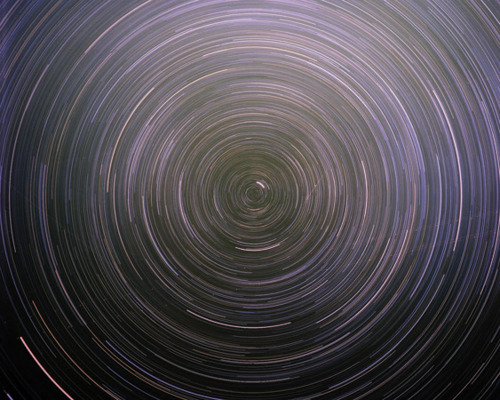
The full version of this interview can be found in the Mapping Issue of Conveyor Magazine. To get your hands on one, visit: { www.conveyormagazine.org }
12 Jan 2012 / 16 notes / Trevor Paglen Christina Labey Conveyor Magazine Mapping geography
“I wanted to alter our normal perception of reality, to make ordinary objects become something else entirely. The work became a lot more physical, and the process more sculptural, which now seems like a good way of combining my interest in art and photography.”
- Alejandra Laviada
Excerpt from an interview with NYMPHOTO
For more of her work visit: { www.alejandralaviada.com }
9 Jan 2012 / 0 notes / Alejandra Laviada Nymphoto Christina Labey Photos We Love
Jeremy Haik. From the Series aphasiaticisms (a man of fine feeling), 2011.
8 Dec 2011 / 2 notes / jeremy haik Christina Labey aphasiaticisms (a man of fine feeling) Photos We Love
Macabre & Mysticism at Red Roots Gallery
Motifs of macabre and mysticism have been visible in art since it’s inception. The curiosity of both the tragic and the transcendent dates back to pre-historic cultures, and remain a common theme in contemporary art.
In many early cultures artisans communicated with otherworldly beings though funerary statues carved for loved ones who were making their way from the earthly world to the afterlife. Later the Danse Macabre, an allegory of death, surfaced as an artistic genre throughout Medieval Europe. The Memento mori and vanitas traditions of painting, which reminds us that our earthly life is fleeting, flourished in the Renaissance and Golden Age of Dutch painting, and remain a popular genre that many contemporary works continue to reference.
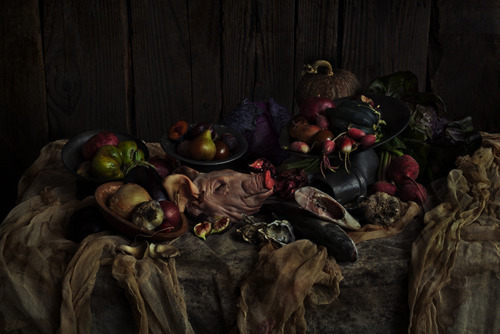
Nicholas Alan Cope
Since the advent of the photography, people have been compelled to capture on film what is unseen by the naked eye; from the crime scenes of Weegee or the Disaster Series of Warhol, to the ever-popular genre of spirit photography, we are compelled to document that which questions and transcends our earthly existence.


Andy Warhol
Through dioramas of true crime scenes and the invisible nuances of historically haunted houses, our guest curator Corinne May Botz captures this hint of the supernatural in her photographic series “The Nutshell Studies of Unexplained Death” and “Haunted Houses.”
When curating the Macabre & Mysticiscm exhibition, Botz encountered a delicate balance between a sense of dread and a feeling of wonder in the submitted work. She identified historical motifs and used them to weave the show together. The exhibition is rooted in dark narratives that lie just beneath the surface of everyday life, evoking dark romanticism, summoning foreign bodies and creating a displaced experience.

Corinne May Botz
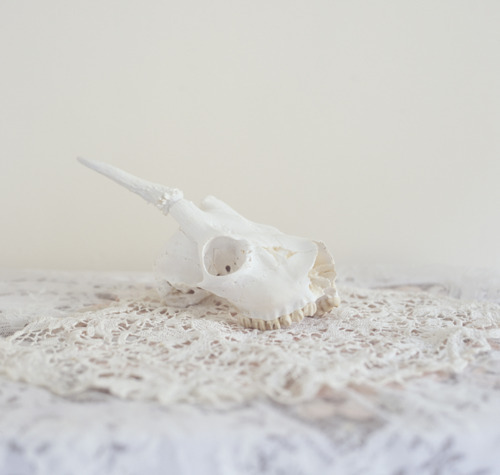
Laura Bell
Corinne May Botz on Curating Macabre & Mysticism at Red Roots Gallery:
“Through carefully composed still-lives that recall vanitas paintings, Laura Bell and Eran Gilat create and represent the vanity of life and encroachment of death through symbolic objects. In Caitlin Parkers film Regression, we see an uncanny splitting of the conscious and unconscious self as a hypnotist guides us into fragmented slippages of time and place.
Phoenix Lindsey-Hall’s reflections of LGBT hate crimes throughout America explore notions of self and other. Her installations reveal the transgressive nature of everyday objects and put the viewer in the uncomfortable position of determining who is the perpetrator and who is the victim.

Darin Mickey
Emile Askey’s subtle diptychs target the subliminal stimuli of the viewer to summon both confusion and fear. Brea Souder’s surrealistic photographs icily dissect and recreate the dreams journals of well-known scientists and philosophers, while Darin Mickey’s photographs of everyday objects retain a matter of fact existence infused with a sense of mysticism.”

Brea Souders.
Macabre & Mysticism opens this Saturday, October 29th from 6 - 10pm at Red Roots Gallery and will remain on view until December 16th, 2011.
Red Roots Gallery
25 Central Park West
New York, NY 10023
For more information visit: { www.redrootsgallery.com }
27 Oct 2011 / 1 note / Andy Warhol Brea Souders Caitlin Parker Christina Labey Corinne May Botz Macabre and Mysticism Nicholas Alan Cope Red Roots Gallery Happenings
Wanderer Above the Sea of Media, after Caspar David Friedrich, Vik Muniz. 2011.
I admire the subtle inclusions of cosmic motifs. Scientific diagrams and representations of constellations and galaxies suggest our relationship with time in space. Others may see celebrity faces, art historical references, and other conventional images that allow the viewer to read further into their own ideas. Muniz is a craftsman of permissiveness; we can all find what we are looking for in these complex and layered pieces.
— Christina Labey
Vik Muniz: Pictures of Magazines II
Closes Saturday, October 15th, 2011
Sikkema Jenkins & Co.
530 W 22nd Street
New York City, NY 10011
www.sikkemajenkinsco.com
14 Oct 2011 / 11 notes / VIk Muniz Christina Labey Photos We Love
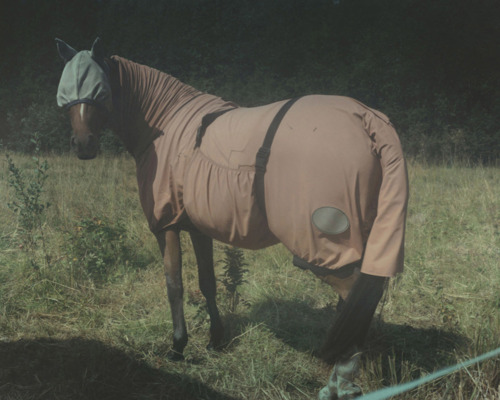
Excerpt from “Far Too Close” by Martina Hoogland Ivanow
For More Visit: { www.martinahooglandivanow.com }
27 Sep 2011 / 1 note / Photos We Love Martina Hoogland Ivanow Christina Labey
Interview with Penelope Umbrico
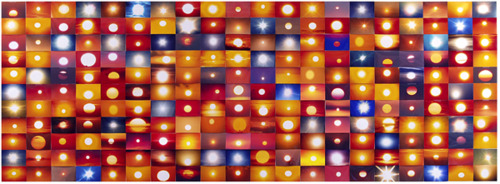
To kick off our interview series on the blog, we dug into our archives to bring you excerpts from an interview with Penelope Umbrico featured in the print version of Conveyor Magazine, Issue No 1.
In March, Penelope Umbrico invited Conveyor Magazine editors Christina Labey and Elizabeth Bick to her Downtown Brooklyn studio as a continuation of the conversations held at The Photographic Universe conference at Parsons, The New School. Penelope’s ideas resonated throughout the conference. The presentation of her work sparked dynamic conversations on the significance of the increasing global accessibility of Internet snapshot archives to photographic theory. In the following interview, we talk with Penelope about the future of her Suns from Flickr Project, the status of the appropriated digital image, and the investigation of a uniquely digital sublime.
CM: Your work embraces the overwhelming amounts of images on the Internet. Why did you choose, from everything out there, to focus on images of the sun?
PU: To begin with, I was simply struck by the amount of pictures of sunsets. I was thinking about the fact the sun is actually out there, so far away, warm and so on. What was interesting was how we take that thing [the sun] and subsume it to this electronic space. That to me was really poetic. I started to look at the images and think about how they are all the same, how I could comment on that sameness. Of course, we only have one sun but if millions of people are taking pictures of it, then we have millions of suns.
CM: If the sun is always there, why do we feel compelled to photograph it?
PU: Exactly, as if to own it. If there is an element of awe and worship toward the sun, is photographing it taking control of it? And what does it say that we all participate. Oddly the question of authorship gets tangled up here – it’s lovely and poetic to engage in an activity that virtually everyone does – and in the process make photographs that follow a very defined script. It’s another, entirely, to claim individuality or subjectivity with these photographs.

CM: The way the Suns from Flickr project has taken on this new dimension is fascinating. You are finding images all over the Internet of people posing for pictures in front of the sun installations, which lends itself to one of the concerns of your work: the proliferation of suns. Were you anticipating this?
PU: It took me by surprise that this was happening. I now have a collection of these images of people posing in front of my installations as though they are in front of an actual sunset. I am collecting the ones where the subject is looking straight into the camera and as I start showing these images alongside the installation, hopefully it will encourage more of these photographs.
…
CM: From the outside your practice seems very digitally based, however, sitting here in your studio I can see how much you respond to the tactile and physical nature of photography. You have stacks of photographs and work tacked up on all the walls. I think it’s really interesting how you still seem very committed to the tactile process of the printed photograph.
PU: At the conference, Tina Barney asked James Welling if he ever gets frustrated with the flatness of the two dimensionality of the photograph. I was surprised by the question – to me that flatness is seductive, and I love the physicality of the print. I like the work to sit right on the edge between representation and abstraction, illusory 3-dimensional and 2-dimensional object. So yes, I am very particular about material and craft. It’s important to me, for example, that the sun photographs are produced via a mass-market process – 4” x 6” Kodak “Easy Share” machine prints (Kodak actually calls them this) or that Broken Sets (eBay) are digital c-prints on metallic paper – the sheen and luminescence of that paper lends to the coolness of the subject matter (the technological breakdown derived from images of broken electronic displays sold on eBay).
…
Penelope Umbrico is featured in the show Social Media at the Pace Gallery Opening Tonight!
Social Media
The Pace Gallery
510 West 25th Street, New York
Thursday September 15, 6:00 - 8:00 pm
To see the rest of the interview in print { www.conveyormagazine.org }
To see more of Penelope Umbrico’s work: { www.penelopeumbrico.net }
15 Sep 2011 / 1 note / Penelope Umbrico Conveyor Magazine Christina Labey Elizabeth Bick Suns From Flickr

